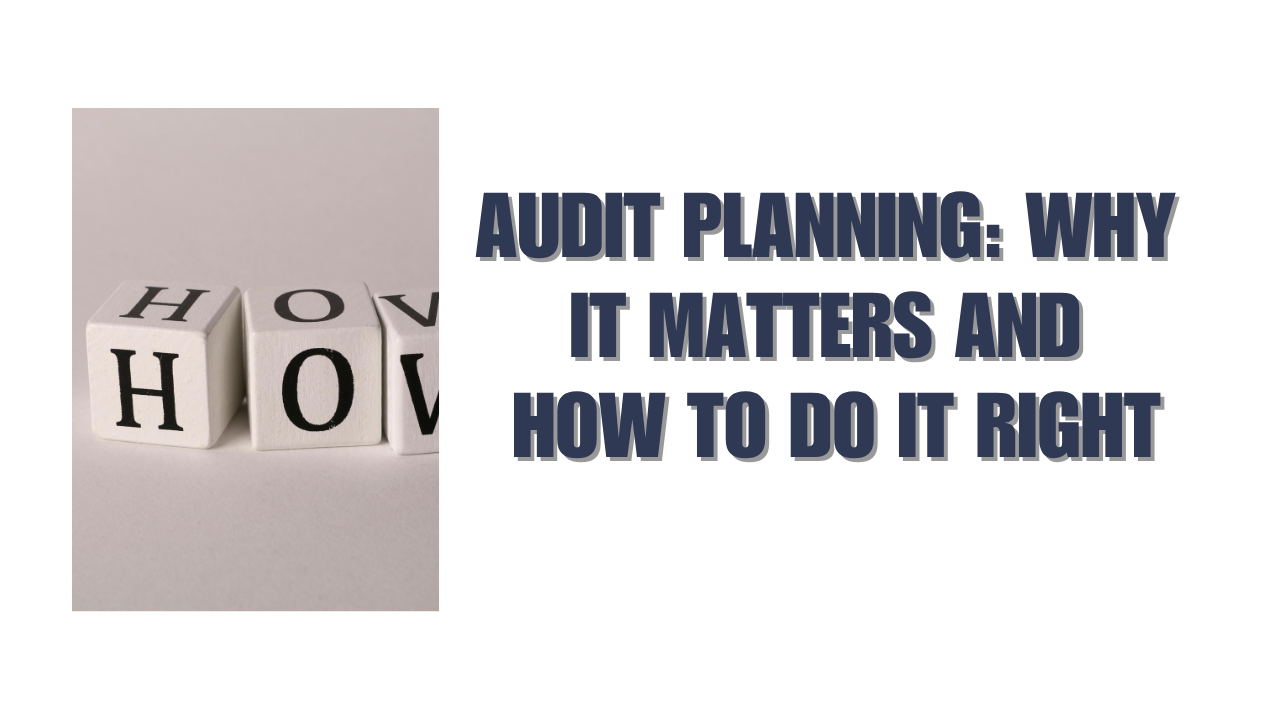An audit’s success doesn’t start with testing transactions or reviewing financial statements—it begins with audit planning. Planning is the foundation that ensures audits are efficient, risk-focused, and provide actionable insights. Without a structured plan, audits risk being reactive, incomplete, or unnecessarily time-consuming.
At Aurora Financials, we emphasize that effective audit planning is not just a procedural requirement. It’s a strategic process that guides auditors, provides clarity for management, and ultimately helps organizations achieve audit cost savings and operational improvements.
Why Audit Planning Matters
Audit planning is critical for several reasons:
- Risk Identification: It identifies high-risk areas that require closer scrutiny.
- Efficiency: A clear plan ensures audit resources are allocated effectively, avoiding redundant or unnecessary work.
- Compliance: Helps ensure audits meet regulatory and professional standards.
- Actionable Insights: By focusing on key areas, audits yield findings that management can act upon.
A well-structured plan ensures the audit is both thorough and focused, creating value beyond compliance.
Key Steps in Audit Planning
Audit planning involves a combination of strategic thinking, data analysis, and stakeholder engagement. The process can be broken down into several essential steps:
1. Define Audit Objectives
The first step is to clarify the audit’s purpose. Objectives may include evaluating financial statement accuracy, testing internal controls, assessing compliance, or identifying operational inefficiencies. Clear objectives provide direction and help focus audit efforts.
2. Understand the Business and Environment
Auditors must gain a deep understanding of the organization’s operations, industry, and regulatory environment. This includes reviewing past audits, financial statements, organizational structure, and processes. Understanding the business context helps identify areas most susceptible to risk or errors.
3. Conduct Risk Assessment
Risk assessment is at the heart of effective audit planning. Identify areas of high materiality, financial significance, or operational vulnerability. Evaluating potential risks helps prioritize audit procedures and ensures resources are allocated where they matter most.
4. Develop the Audit Strategy
The audit strategy outlines the scope, timing, and resources needed for the audit. Key considerations include:
- Which accounts, processes, or systems to review.
- Types of audit procedures to perform (tests of controls, substantive testing, analytical procedures).
- Timeline for completing each stage of the audit.
- Assignment of responsibilities among audit team members.
A well-defined strategy ensures that the audit remains focused and aligned with organizational priorities.
5. Design Audit Procedures
Once the strategy is in place, auditors design specific procedures to test controls and verify accuracy. This includes selecting samples, defining testing methods, and documenting how findings will be evaluated. Properly designed procedures increase audit efficiency and reliability.
6. Set Materiality Thresholds
Determining materiality helps auditors decide which errors or discrepancies are significant enough to affect decisions. Materiality thresholds guide the scope of testing and ensure attention is focused on areas with the greatest impact.
7. Establish Communication Channels
Clear communication with management and relevant stakeholders is essential. Discuss audit scope, objectives, timelines, and expectations before the fieldwork begins. This ensures alignment and reduces the risk of misunderstandings during the audit.
Best Practices for Audit Planning
Effective audit planning requires a disciplined approach and attention to detail. Best practices include:
- Use Historical Data: Leverage prior audits, financial trends, and known risk areas to inform planning.
- Focus on High-Risk Areas: Allocate more resources to areas with higher potential impact.
- Engage Key Stakeholders: Include management and relevant department heads in planning discussions.
- Document the Plan: Maintain a clear audit plan that outlines objectives, procedures, and responsibilities.
- Be Flexible: Audit plans should be adaptable to changes in business conditions, regulations, or emerging risks.
Benefits of Effective Audit Planning
Organizations that invest in robust audit planning experience measurable benefits:
- Enhanced Efficiency: Structured plans reduce duplication of effort and streamline fieldwork.
- Better Risk Coverage: Risk-focused planning ensures high-risk areas are thoroughly reviewed.
- Actionable Insights: Targeted audits produce findings that management can act on effectively.
- Cost Savings: Efficient audits save time and resources, contributing to overall audit cost savings.
- Improved Stakeholder Confidence: Boards, investors, and regulators gain assurance that audits are comprehensive and strategic.
Leveraging Technology in Audit Planning
Modern audit planning increasingly relies on technology to enhance efficiency and accuracy:
- Data Analytics: Identify anomalies, trends, and high-risk areas for targeted audit procedures.
- Project Management Tools: Track tasks, timelines, and responsibilities to ensure smooth execution.
- Automation: Automate routine procedures like sampling or data extraction, freeing auditors for strategic tasks.
- Dashboards: Provide a visual overview of audit status, risks, and findings.
At Aurora Financials, we integrate technology with professional judgment to ensure audit plans are efficient, accurate, and actionable.
Common Pitfalls to Avoid
Even experienced auditors can encounter challenges if planning is insufficient:
- Inadequate Risk Assessment: Overlooking key risks may result in incomplete audits.
- Poor Communication: Failing to align with stakeholders can cause misunderstandings and delays.
- Rigid Plans: Inflexibility can prevent auditors from adapting to emerging risks or new information.
- Insufficient Documentation: Without proper documentation, accountability and tracking become difficult.
Avoiding these pitfalls ensures audits are effective, focused, and aligned with organizational priorities.
Conclusion
Audit planning is more than a procedural step—it is a strategic activity that ensures audits are thorough, risk-focused, and valuable. By defining objectives, assessing risk, designing procedures, and engaging stakeholders, organizations can maximize the impact of their audits.
Effective audit planning results in more efficient audits, better risk coverage, actionable findings, and measurable audit cost savings. It transforms audits from a compliance exercise into a strategic tool that strengthens internal controls, informs decision-making, and enhances stakeholder confidence.
Aurora Financials helps organizations develop and execute audit plans that align with their operational and strategic goals. Our expertise ensures audits deliver clarity, actionable insights, and tangible value for management and boards alike.
Contact Aurora Financials today to learn how we can help you plan audits effectively, improve efficiency, and transform audit findings into meaningful organizational improvements.






